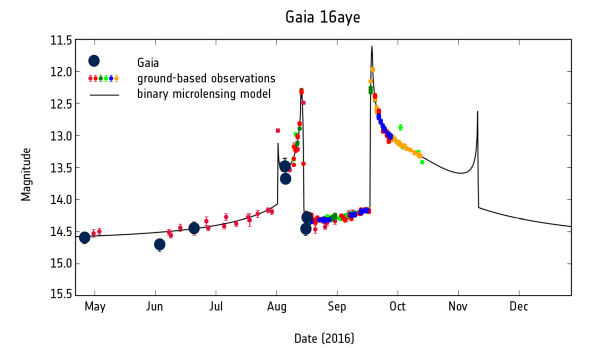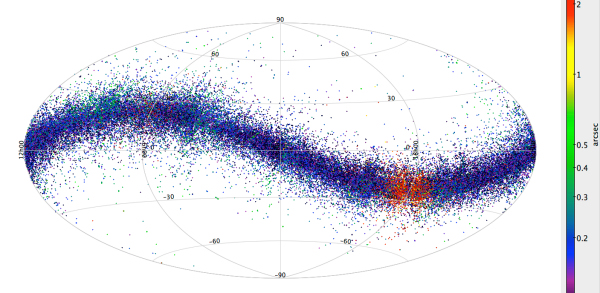http://sci.esa.int/gaia/59004-two-million-stars-on-the-move/
Video https://www.youtube.com/watch?v=p4xuA-OeaBc
Put it on loop and use it as a screensaver. When viewing, I find it useful to concentrate on a small patch of relatively slow moving stars
The changing face of our Galaxy is revealed in a new video from ESA’s Gaia mission. The motion of two million stars is traced 5 million years into the future. This video shows the 2 057 050 stars from the TGAS sample, with the addition of 24 320 bright stars from the Hipparcos Catalogue. The frames in the video are separated by 750 years. The stripes visible in the early frames reflect the way Gaia scans the sky.
Some of the stars appear to dart across the sky with very high velocities: for some stars, this is an effect of their close passage to the Sun – for example, in about 1.35 million years, the star Gliese 710 will pass within about 13 500 au (10 trillion kilometres) from the Sun. Other stars seem to trace arcs from one side of the sky to the other, passing close to the galactic poles, accelerating and decelerating in the process. After a few million years, the plane of the Milky Way appears to have shifted towards the right: this is mainly the consequence of the motion of the Sun.
Gaia’s second data release, in April 2018, will include not only the positions, but also distances and proper motions for over one billion stars, as well as radial velocities for some of them.

